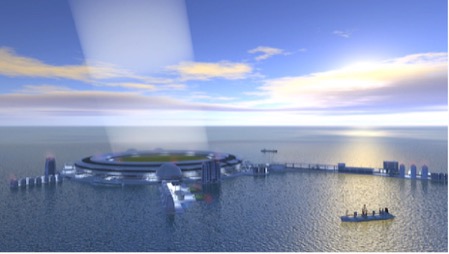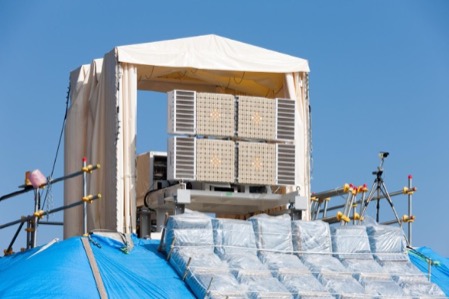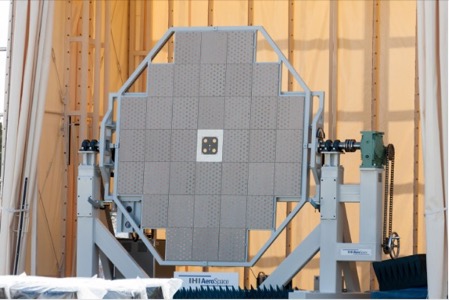
The conceptual picture of SSPS envisioned by NASA
One of the research topics of solar power generation systems is the method of power transmission. Wires are used to transmit electricity from power stations to consumers such as homes, but it is not practical to transmit electricity produced in outer space back to Earth through wires. Therefore, it is necessary to have the technology to transmit electric energy by wireless means. However, the current situation is that this wireless power transmission technology has not yet been developed and perfected.
The Japan Aerospace Exploration Agency (JAXA) is cooperating with Japan Space Systems Development and Utilization Agency (JSS) to develop technology for wireless power transmission using microwaves. The microwaves used here are electromagnetic waves with a wavelength of about 1 to 10 centimeters. Electricity generated by electricity generation in the universe can be transmitted in the form of microwaves. Electricity is then generated on Earth using electronic components called "microwave rectennas" that convert microwave energy into direct current. Because microwaves have the property of being able to penetrate clouds and rain, they are suitable as a means of transmitting electricity from the universe to the Earth.

Artistic image of SPSS ground receiving station
A test of wireless power transmission using microwaves was carried out at a facility in Hyogo Prefecture, Japan on March 8, 2015. In the experiment, about 340 watts (about 19% of the original) of the 1.8 kilowatts of power sent from the transmitter were received by the receiver at a distance of 55 meters after microwave transmission. In this experiment, it was impossible to receive all the microwaves due to the small size of the receiving components. About 81% of the transmitted power could not be received due to the limitation of the conversion efficiency of the microwave rectenna. However, this transmission efficiency is in line with expectations.

Delivery devices
In fact, the goal of scientists is to transmit electric energy to the ground from 36,000 kilometers away from the earth's surface through the space solar power generation system, which can receive about 1 million kilowatts of electric energy. This is equivalent to the power generation of a million-kilowatt nuclear power plant unit. This experiment is far from the preset space solar power generation system to transmit power, but it can be said that it has taken another step toward the realization of wireless power transmission.

Receivers
Some people worry about whether the use of microwaves will have any adverse effects on electronic equipment or the human body. The JAXA Ohashi, who was in charge of the experiment said that the intensity of the microwave energy used by the space solar power generation system is only several times the intensity of the sunlight that irradiates the surface of the earth even in the center of the microwave beam. If a bird flies through the microwave transmission path, there will only be slight hotness. In addition, although no relevant standards have been formulated based on the safety standards of energy intensity, in order to prevent possible erroneous operations of electronic equipment, people or aircraft should be prohibited from approaching the power receiving place.
In addition to safety and wireless power transmission technology, there are many issues related to the realization of space solar power generation systems. One of the most important items is the construction method of huge space solar power generation system equipment. It is estimated that the solar power station floating in the universe can reach a side length of more than 2 kilometers and a total weight of more than 10,000 tons. The International Space Station is about 420 tons. The technology to transport such a huge device into space and assemble it has not yet existed. Although it is still sometime before the realization of SSPS, related technical development should continue in the future to realize it.